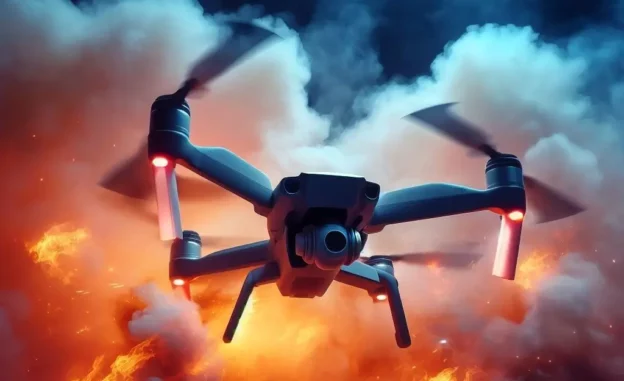Inspenet, October 12, 2023.
David Häusermann, a research engineer at Empa, Switzerland, explains how he managed to develop a drone with the ability to operate in extreme temperature environments. The FireDrone project represents a collaboration between Empa, the Swiss Materials Science and Technology Laboratories and Imperial College London.
The origin of this initiative dates back to 2017, after the tragic fire at Grenfell Tower in London. At that time, Professor Mirko Kovac, who leads the Sustainable Robotics Laboratory at Empa and directs the Aerial Robotics Laboratory at Imperial College London, was faced with the question of whether he had at his disposal a suitable drone to operate in the inside buildings and collaborate in firefighting efforts. Unfortunately, there was no suitable solution .
By 2019, the project had already been established and I was involved in it as part of my Master’s program in Mechanical Engineering at ETH Zurich.
Earlier this year, we completed testing of a prototype and published our white paper titled “ FireDrone: A Thermally Agnostic Aerial Robot for Multiple Environments .” This drone is built with an innovative airgel insulating material and is equipped with an internal cooling system that allows it to withstand temperatures of up to 200°C (392°F) for up to ten minutes.
Our ultimate goal is to develop a product that firefighters can use for the evaluation of fires and dangerous areas, contributing to the rescue of lives and, at the same time, reducing the risk for the firefighters themselves.
About FireDrone Design
The FireDrone stands out for its unique design. We initially considered coating a commercial drone with airgel, but decided to undertake the build from scratch. We create a protective casing that protects heat-sensitive components such as regular and infrared cameras, temperature sensors, video transmitters, flight controllers, batteries and radio receivers.
This casing is made of glass fiber reinforced polyimide airgel and coated with aluminum to reflect thermal radiation. Its rotors are also made of carbon fiber and coated with aluminum.
One of the most significant challenges of the project involved the simultaneous development of the FireDrone and the polyimide airgel insulation material in a collaboration with the Superinsulating Materials team at Empa.
The mechanical and thermal properties of the airgel exert a determining influence on its design. For example, we incorporate glass fibers in order to prevent the contraction of the polyimide airgel under high temperature conditions. Likewise, we applied an aluminum coating in order to reflect thermal radiation, which resulted in improved insulation performance.
We carry out an extensive material characterization process using representative samples. The data obtained in these characterizations were subsequently used in the design stage, using simulation loops to model the thermal insulation performance.
We then developed qualification models for both the structure and the insulation, which were merged into the final prototype. Additionally, it was subjected to tests in climatic chambers at Empa facilities before proceeding to in-flight evaluations with exposure to fire.
Initial flight tests were carried out at the Empa Flight Arena facility, followed by flights close to real fire situations at a firefighter training center in Zurich. A fundamental finding was the observation of the behavior of the drone when approaching the fire. While we anticipate the impact of decreased lift in the presence of turbulent hot air, further research is required to understand and model turbulence and find ways to mitigate it in terms of power control and rotor operation.
We have maintained close collaboration with firefighters since the conception of the project, recognizing the importance of addressing their needs and requirements. This has allowed us to design a device that is truly valuable to them and does not cause delays in their operations.
At this moment, we are immersed in the development of the second version of the FireDrone, which will be more compact, lighter and offer better performance. In addition, we have plans to achieve a level of autonomy and heat resistance that exceeds 200°C.


